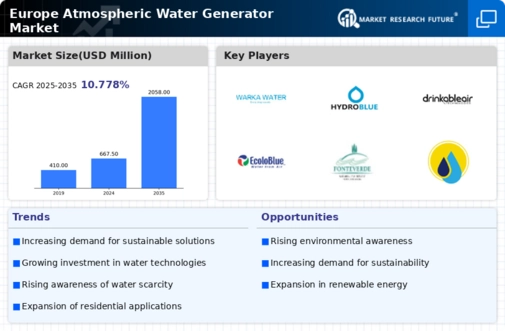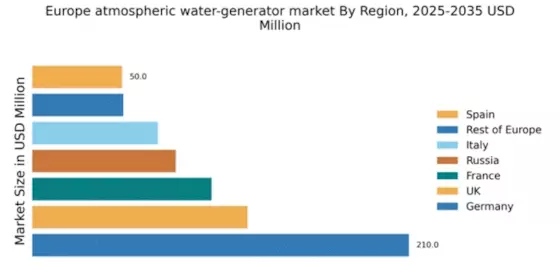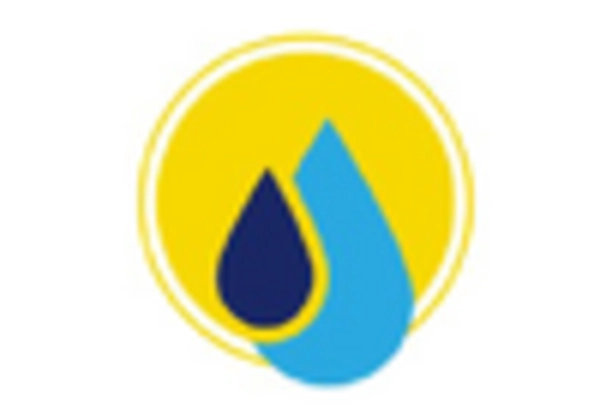Increasing Water Scarcity
The atmospheric water-generator market in Europe is experiencing growth due to the increasing water scarcity in various regions. As climate change continues to impact weather patterns, many areas face prolonged droughts, leading to a significant reduction in freshwater availability. This scarcity drives the demand for alternative water sources, such as atmospheric water generators, which can extract moisture from the air. In fact, studies indicate that certain European countries may see a decrease in freshwater resources by up to 30% by 2050. Consequently, the atmospheric water-generator market is positioned to provide innovative solutions to address these challenges, ensuring a sustainable water supply for both urban and rural communities.
Supportive Policy Frameworks
Supportive policy frameworks established by European governments are fostering growth in the atmospheric water-generator market. Many countries are implementing regulations and incentives aimed at promoting sustainable water management practices. For example, the European Union has set ambitious targets for water conservation and resource efficiency, encouraging investments in innovative technologies. Financial incentives, such as grants and subsidies for the installation of atmospheric water generators, are becoming more common. This supportive environment not only stimulates market growth but also encourages research and development in the sector, paving the way for new solutions that can address the pressing water challenges faced by many European nations.
Rising Environmental Awareness
There is a notable rise in environmental awareness among consumers and businesses in Europe, which is positively influencing the atmospheric water-generator market. As individuals become more conscious of their ecological footprint, they are increasingly seeking sustainable water solutions. This shift in consumer behavior is reflected in market data, which shows a 25% increase in the adoption of eco-friendly technologies over the past three years. Companies are responding by investing in atmospheric water generators that utilize renewable energy sources, thereby reducing carbon emissions. This trend not only aligns with the growing demand for sustainable practices but also enhances the market's appeal to environmentally conscious consumers.
Urbanization and Population Growth
The rapid urbanization and population growth in European cities are driving the atmospheric water-generator market. As urban populations expand, the demand for clean and accessible water sources intensifies. Urban areas are often challenged by inadequate water supply systems, leading to increased reliance on alternative water generation methods. Market analysis indicates that urban populations in Europe are projected to grow by 10% by 2030, further exacerbating water supply issues. Atmospheric water generators offer a viable solution by providing localized water production, thus alleviating pressure on existing infrastructure. This trend highlights the potential for significant market expansion in urban settings.
Technological Innovations in Water Generation
Technological innovations are playing a crucial role in shaping the atmospheric water-generator market in Europe. Advances in materials science and energy efficiency have led to the development of more effective and cost-efficient atmospheric water generators. For instance, new condensation technologies can increase water yield by up to 50%, making these systems more attractive to consumers and businesses alike. Furthermore, the integration of smart technologies allows for real-time monitoring and optimization of water production, enhancing user experience. As these innovations continue to emerge, they are likely to drive further adoption of atmospheric water generators across various sectors, including residential, commercial, and industrial applications.


















Leave a Comment